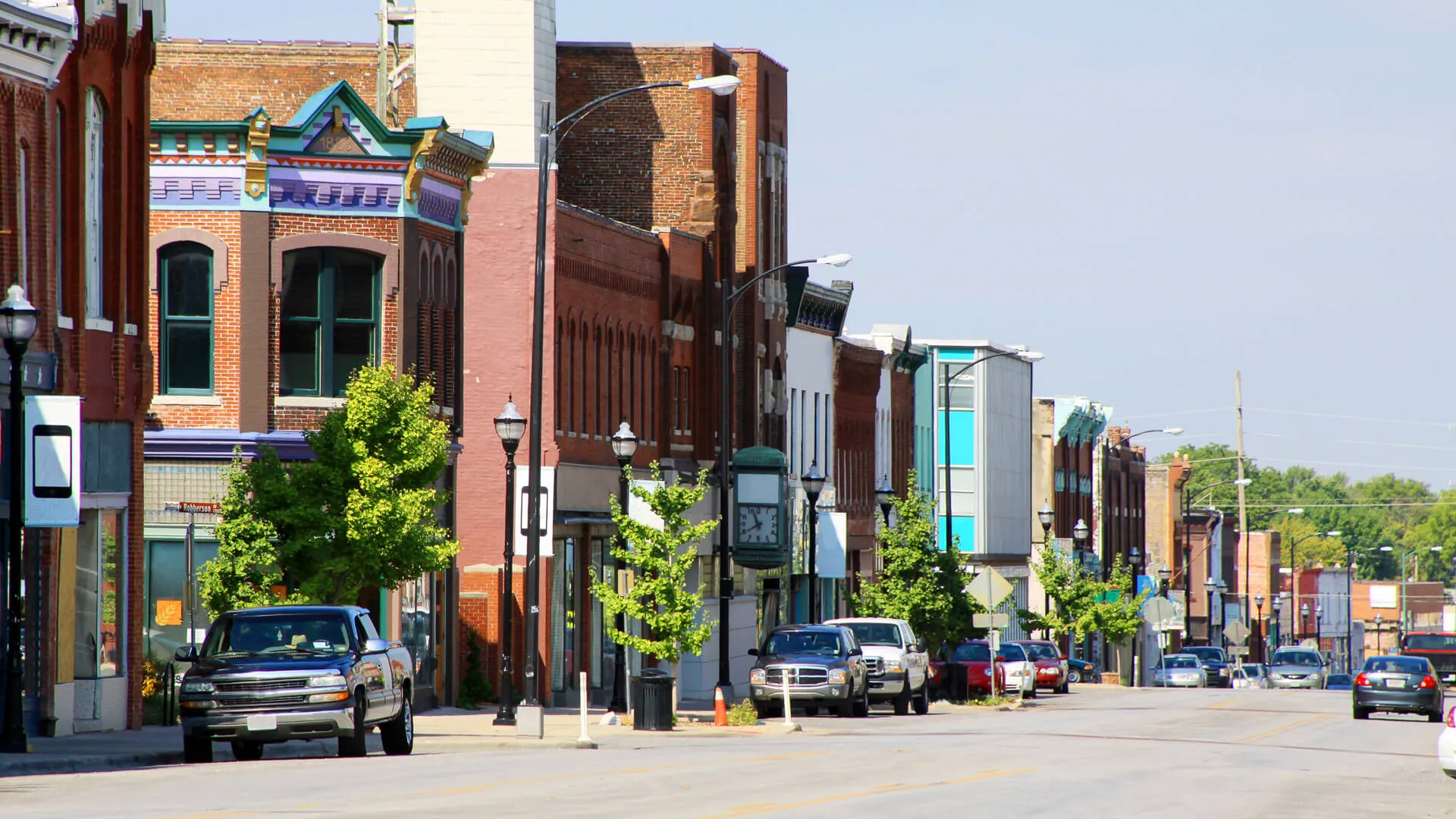With so many American families grappling with hefty rent payments, burdensome credit card debt, and towering student loans, finding an affordable and inviting place to set up home can be a daunting task. Indeed, unearthing a city that boasts rewarding job opportunities paired with budget-friendly housing often feels like trying to balance on a tightrope. The common assumption tends to be that cities offering decent wages inevitably carry steep housing costs. However, it’s a relief to know that numerous cities across the U.S. manage to harmoniously blend the best of both worlds.
In my quest to pinpoint these rare gems, I embarked on an explorative journey across the 200 largest housing markets in the U.S., as ranked by Zillow. To navigate my course, I relied on a range of valuable information, including data on median home values and monthly rent rates as of February 2024. In addition, I delved into the Metro Statistical Area unemployment rate figures, provided by the Bureau of Labor Statistics in December 2022.
The ten standout cities that made it onto my final list surpassed my expectations. Each one showcased a unique blend of lower than average U.S. costs across all examined factors, from home values and rent rates to unemployment. I also enriched my analysis with additional insights, drawing from the American Community Survey’s labor force participation statistics and AreaVibes’ livability scores. Rest assured, all the data I used was up-to-the-minute, with the most recent being collected on March 14, 2024.
In our experience and opinion, these cities represent some of the best places in the U.S. where job opportunities and affordable housing intersect, providing a sweet spot for American families navigating today’s economic landscape.
Best Places By Our Choice
Evansville, Indiana
City of Evansville offers a variety of job opportunities, particularly in the manufacturing, healthcare, and logistics sectors. Thousands of jobs are posted across the region, and more are on the horizon with companies like Houston-based recycling company Avangard Innovative planning expansions1. The city also has ongoing initiatives to meet healthcare workforce demands and help local individuals transition to healthcare-focused jobs. The unemployment rate remains low, indicating a strong job market. The typical home value in Evansville is $168,401, and the typical rent is $826, making it an affordable place to live.
- Typical home value: $168,401
- Typical rent: $826
- 2022 unemployment rate: 2.3%
- Labor force participation rate: 62.3%
- Median household income: $57,321
- Livability score: 58
Springfield, Missouri
The typical home value and rent in Springfield are reasonably affordable, and the city has a decent livability score of 62. The unemployment rate is exceptionally low at 1.9%, and the median household income is $55,156.
- Typical home value: $213,892
- Typical rent: $1,227
- 2022 unemployment rate: 1.9%
- Labor force participation rate: 63.8%
- Median household income: $55,156
- Livability score: 62
Birmingham, Alabama
Birmingham has the most affordable typical home value of $90,289 among the three cities. The unemployment rate is at 2.0%, and the median household income is $51,254. The city has a livability score of 65.
- Typical home value: $90,289
- Typical rent: $1,184
- 2022 unemployment rate: 2.0
- Labor force participation rate: 58.9%
- Median household income: $51,254
- Livability score: 65
Huntsville, Alabama
Huntsville has a higher cost of living, with a typical home value of $257,800 and typical rent of $1,434. However, it also has a higher median household income of $84,059 and the lowest unemployment rate of 1.8%. The city boasts a high livability score of 79.
- Typical home value: $257,800
- Typical rent: $1,434
- 2022 unemployment rate: 1.8%
- Labor force participation rate: 62.2%
- Median household income: $84,059
- Livability score: 79
Fort Wayne, Indiana
Fort Wayne, Indiana, has a typical home value of $202,934 with a typical rent of $1,121. The 2022 unemployment rate was 2.2% and the labor force participation rate was 64.9%. The median household income is $67,090, and the city has a high livability score of 75.
- Typical home value: $202,934
- Typical rent: $1,121
- 2022 unemployment rate: 2.2%
- Labor force participation rate: 64.9%
- Median household income: $67,090
- Livability score: 75
Montgomery, Alabama
The typical home value in Montgomery is lower than the national average, making it an affordable place to live. This could be attractive for individuals or families looking to buy a home without a substantial financial burden.The unemployment rate is relatively low, indicating a healthy job market. This could be a positive sign for job seekers considering a move to Montgomery. Recent developments in Montgomery include the construction of a new Amazon fulfillment center, which is expected to create over 500 new full-time jobs. This could further lower the unemployment rate and boost the local economy
- Typical home value: $127,789
- Typical rent: $1,168
- 2022 unemployment rate: 2.5%
- Labor force participation rate: 59.6%
- Median household income: $60,908
- Livability score: 65
Milwaukee, Wisconsin
The typical home value in Milwaukee is higher than in Montgomery but still below the national average, suggesting a relatively affordable housing market.The unemployment rate is slightly lower than in Montgomery, indicating a robust job market.The median household income is lower than the national average, which could be a concern for potential residents.Recent political developments in Milwaukee show a solidification of blue-red voting trends in the spring 2024 election. This could have implications for future political and policy decisions in the city
- Typical home value: $173,931
- Typical rent: $1,160
- 2022 unemployment rate: 2.4%
- Labor force participation rate: 64.1%
- Median household income: $52,784
- Livability score: 61
Lincoln, Nebraska
Additional information from the web search indicates that Lincoln is known for its vibrant downtown area, which is home to a variety of businesses, restaurants, and cultural attractions. The city also has a strong education sector, with the University of Nebraska-Lincoln being a major employer. The city’s economy is diverse, with sectors such as healthcare, education, finance, and insurance playing significant roles.
- Typical home value: $259,208
- Typical rent: $1,199
- 2022 unemployment rate: 2.1%
- Labor force participation rate: 71.1%
- Median household income: $83,418
- Livability score: 78
Sioux Falls, South Dakota
The typical rent is slightly higher than Montgomery but lower than Milwaukee and Lincoln, at $1,178. The city has a very low unemployment rate of 2% and a high labor force participation rate of 74.4%, suggesting a robust job market. The median household income is the highest among the cities, at $85,908. The livability score of 70 indicates that Sioux Falls is a comfortable place to live, with good access to amenities and services.
- Typical home value: $302,956
- Typical rent: $1,178
- 2022 unemployment rate: 2%
- Labor force participation rate: 74.4%
- Median household income: $85,908
- Livability score: 70
Indianapolis, Indiana
Additional information from the web search indicates that Indianapolis has a diverse population and a vibrant economy. The city is known for its sports teams, including the Indianapolis Colts in the NFL. The city’s economy is diverse, with sectors such as healthcare, education, finance, and insurance playing significant roles. The city has a high school graduation rate of 86.7% and a bachelor’s degree or higher attainment rate of 32.9%, indicating a well-educated population. The median household income in 2021 was $54,321, slightly lower than the provided data, suggesting some fluctuation in income levels.
- Typical home value: $216,351
- Typical rent: $1,307
- 2019 unemployment rate: 2.2%
- Labor force participation rate: 67.8%
- Median household income: $68,575
- Livability score: 65
FAQ
1. What is the primary economic sector driving each of these cities?
Evansville, Indiana: Manufacturing, healthcare, and logistics are key sectors. A notable development is the expansion of Houston-based recycling company Avangard Innovative, which should stimulate further job growth.
Springfield, Missouri: The economy is diversified across manufacturing, retail trade, and healthcare.
Birmingham, Alabama: Health care and social assistance make up a significant part of the economy. Major employers include UAB Health System and Jefferson County School District.
Huntsville, Alabama: Huntsville is known for its engineering and tech industries, particularly aerospace and military technology. The city is home to the Cummings Research Park, one of the world’s leading science and technology business parks.
Fort Wayne, Indiana: Manufacturing continues to be a significant part of Fort Wayne’s economy, along with healthcare and social services.
Montgomery, Alabama: State government, healthcare, and manufacturing are the primary economic sectors. Montgomery will also soon host a new Amazon fulfillment center.
Milwaukee, Wisconsin: The city is known for its brewing and manufacturing industries, although healthcare, technical services, and retail trade also form a large part of the economy.
Lincoln, Nebraska: Lincoln’s economy is varied, with strong representation in the education, healthcare, finance, and insurance sectors. The University of Nebraska-Lincoln is a major employer.
Sioux Falls, South Dakota: The city’s economy is driven by sectors such as healthcare, retail trade, and finance and insurance services.
Indianapolis, Indiana: Health care and social assistance, manufacturing, and retail trade are the primary sectors. The city is also known for its sports teams, contributing to the local economy.
2. What’s the general climate like in these cities?
All of these cities have a humid continental or humid subtropical climate, with hot summers and cold winters. Cities in the Midwest and Northeast, such as Milwaukee and Lincoln, can experience quite harsh winters with heavy snowfall. Southern cities like Birmingham and Huntsville have milder winters but hotter, more humid summers.
3. What are the education opportunities in these cities?
All these cities have strong education systems, from elementary to tertiary levels. They host or are near well-known universities, such as the University of Southern Indiana in Evansville, Drury University in Springfield, the University of Alabama at Birmingham, the University of Alabama in Huntsville, Purdue University Fort Wayne, Alabama State University in Montgomery, the University of Wisconsin-Milwaukee, the University of Nebraska-Lincoln, the University of South Dakota close to Sioux Falls, and Indiana University-Purdue University Indianapolis (IUPUI).
4. What is the healthcare infrastructure in these cities?
Each of these cities hosts multiple hospitals and healthcare facilities. Notably, Huntsville, Birmingham, Milwaukee, and Indianapolis are home to high-rated healthcare institutions, providing quality healthcare services to their residents. In Huntsville, for example, the Huntsville Hospital System is one of the largest locally owned and controlled systems in the country.
5. What about the cultural and recreational amenities in these cities?
Each city has its unique cultural offerings. Indianapolis, for instance, is home to a lively arts scene, diverse food culture, and is known for its sports, being home to the NFL’s Colts and NBA’s Pacers. It’s also host to the largest single-day sporting event in the world, the Indianapolis 500. Similarly, Milwaukee is known for its brewing history, having numerous breweries and beer tours. Lincoln, Nebraska, has a vibrant downtown area with a variety of businesses, restaurants, and cultural attractions. Cities like Evansville, Springfield, and Sioux Falls have a range of museums, parks, and family-friendly activities.
Conclusion
In conclusion, the analysis has provided a well-rounded view of ten standout cities across the U.S. that have harmoniously combined affordable living with rewarding job opportunities. These cities, including Evansville, Springfield, Birmingham, Huntsville, Fort Wayne, Montgomery, Milwaukee, Lincoln, Sioux Falls, and Indianapolis, each possess their unique charm, economic appeal, and livability attributes.
From healthcare to manufacturing and logistics, these cities offer robust job markets complemented by lower-than-average U.S. costs across housing and living expenses. Importantly, these cities don’t compromise on other quality-of-life factors like education, healthcare infrastructure, or cultural and recreational amenities, making them ideal choices for American families seeking affordable and fulfilling lifestyles.














